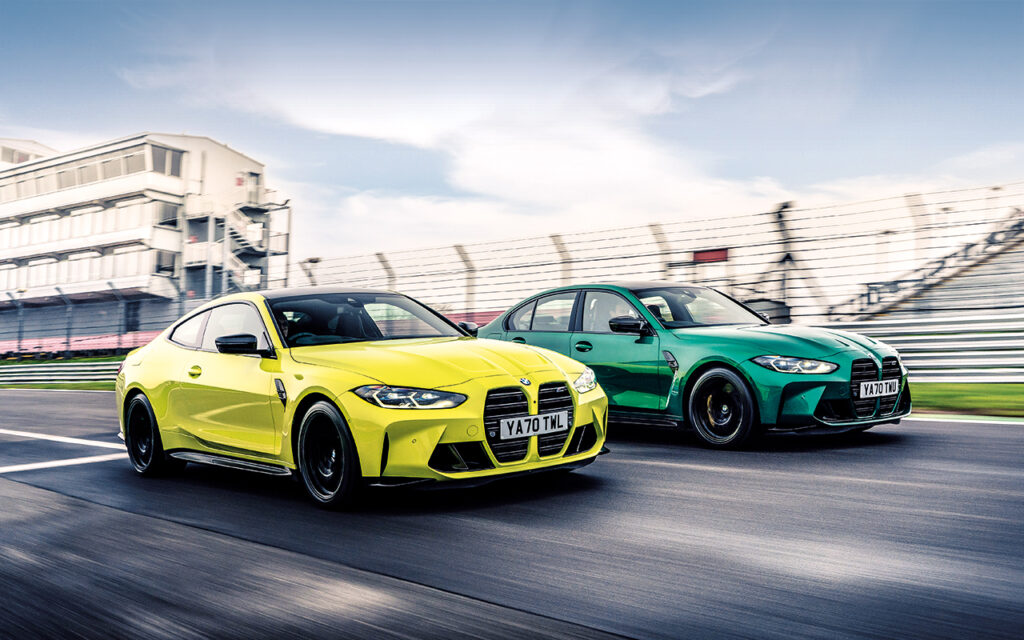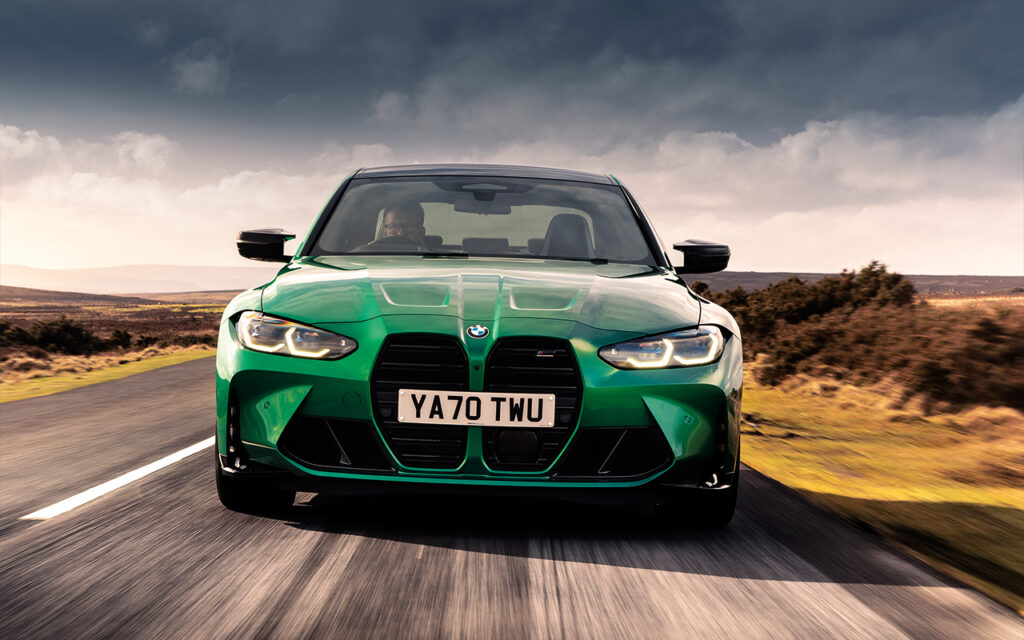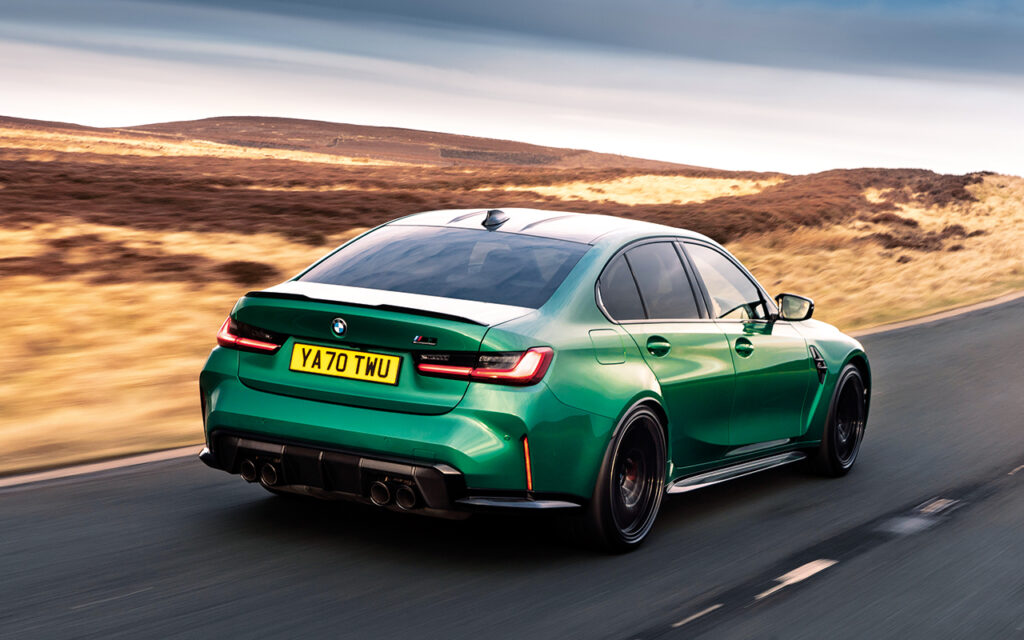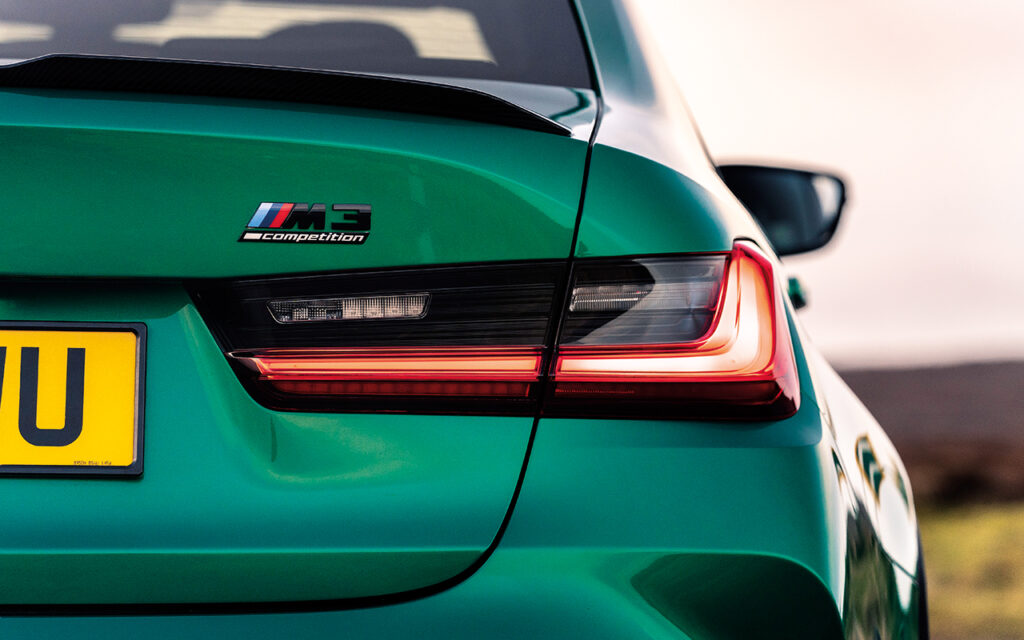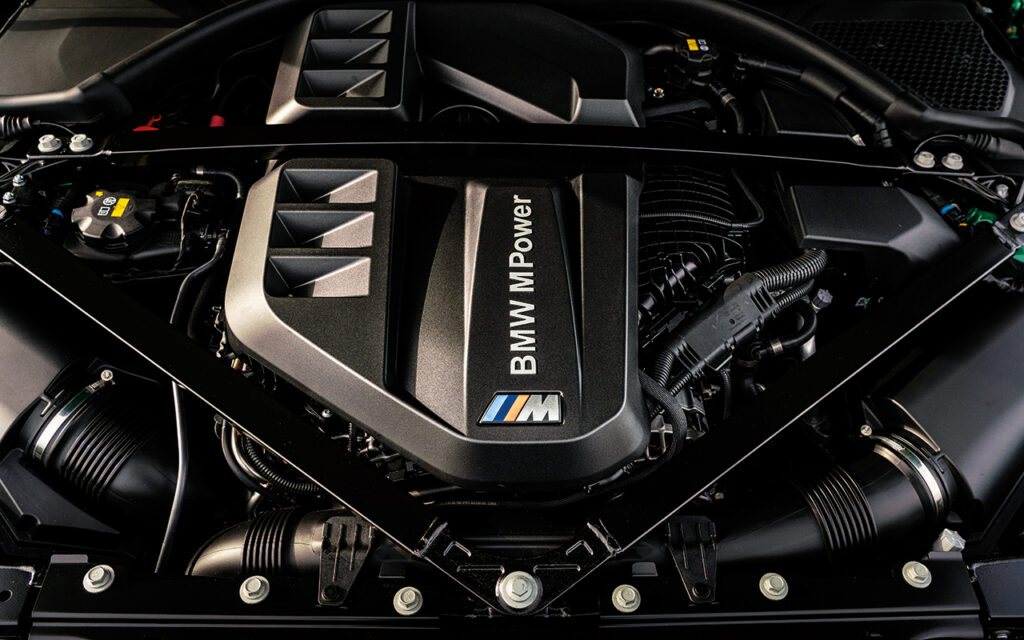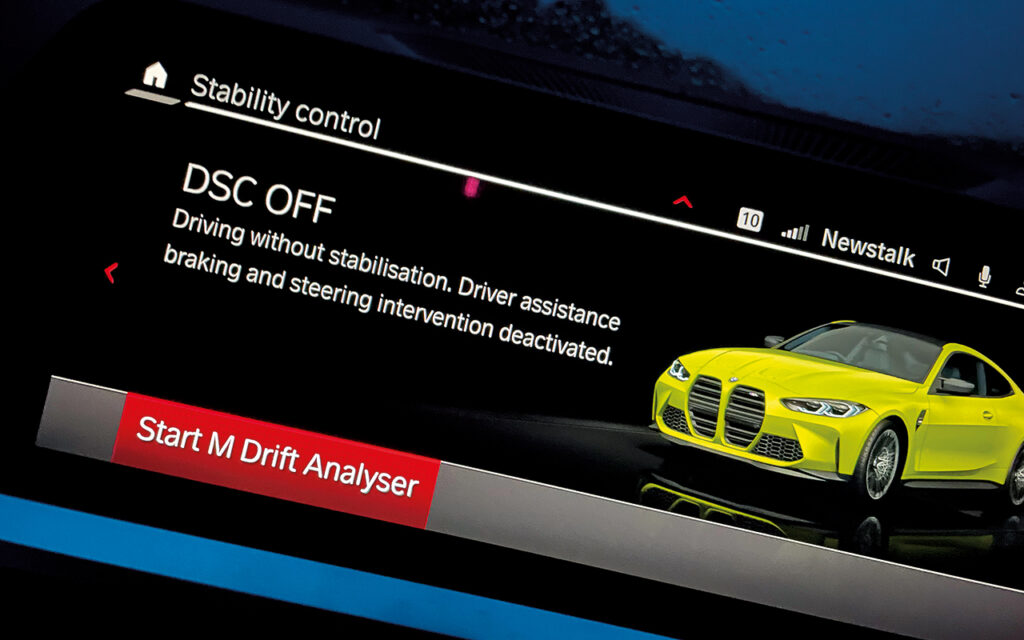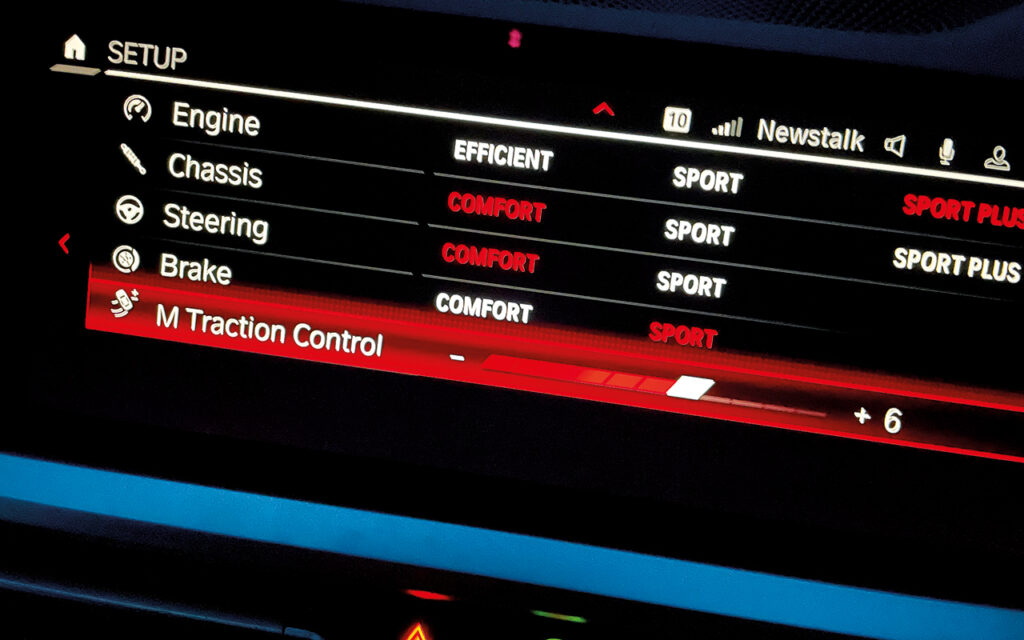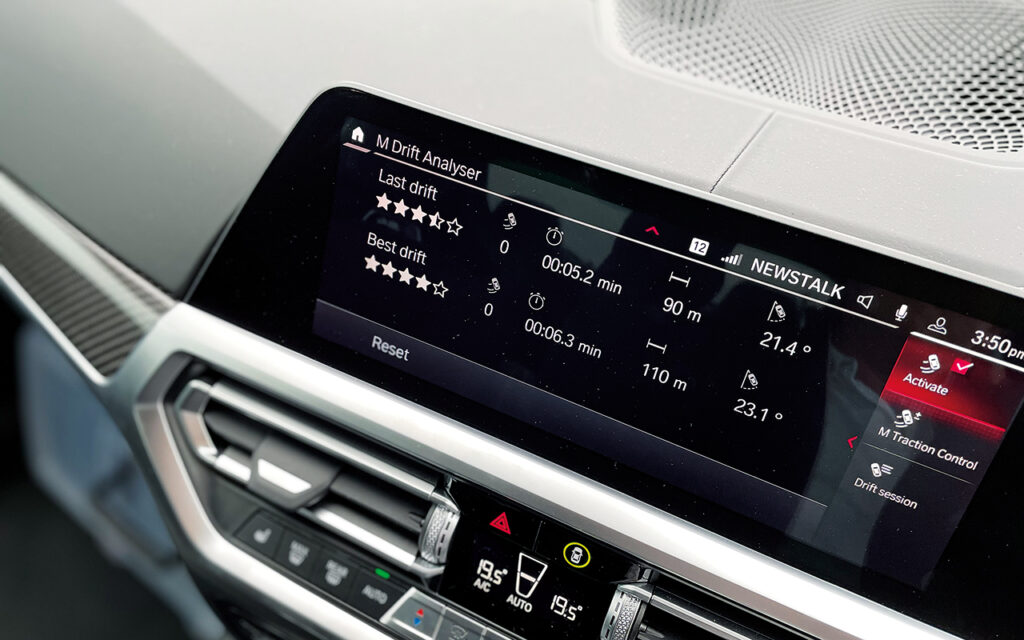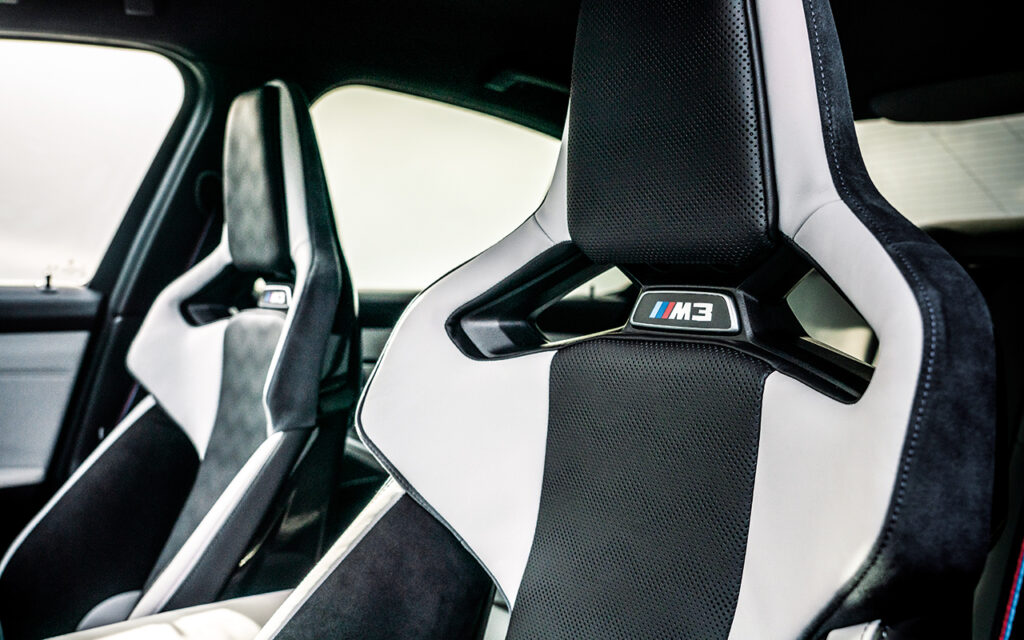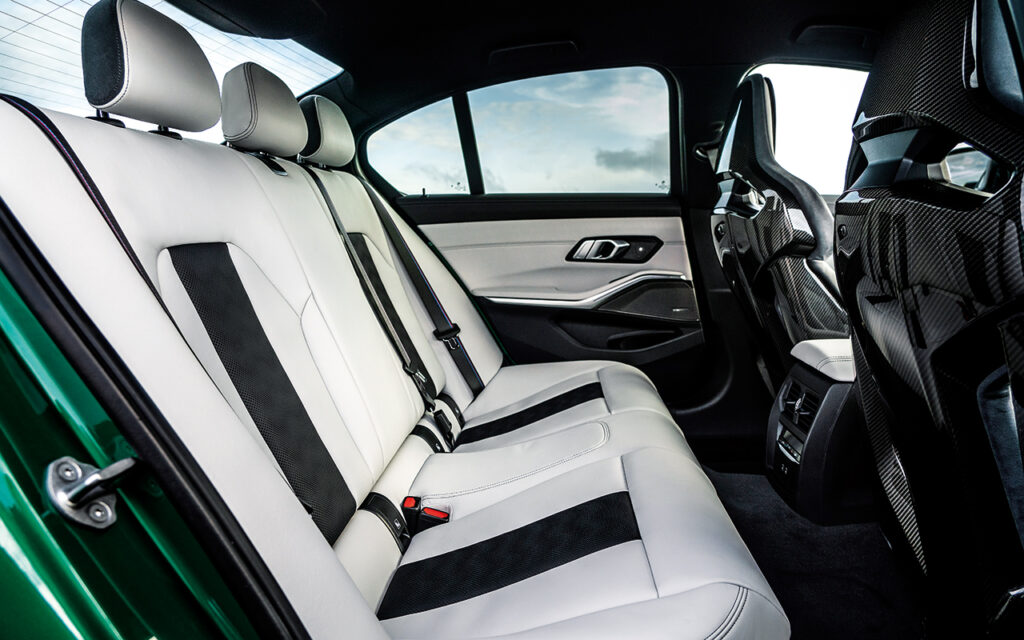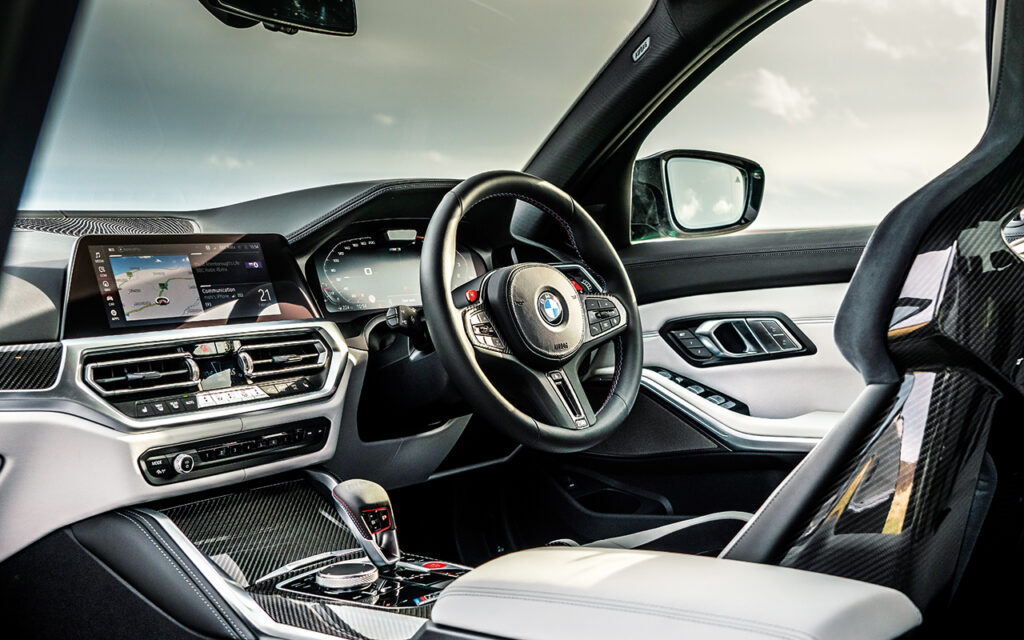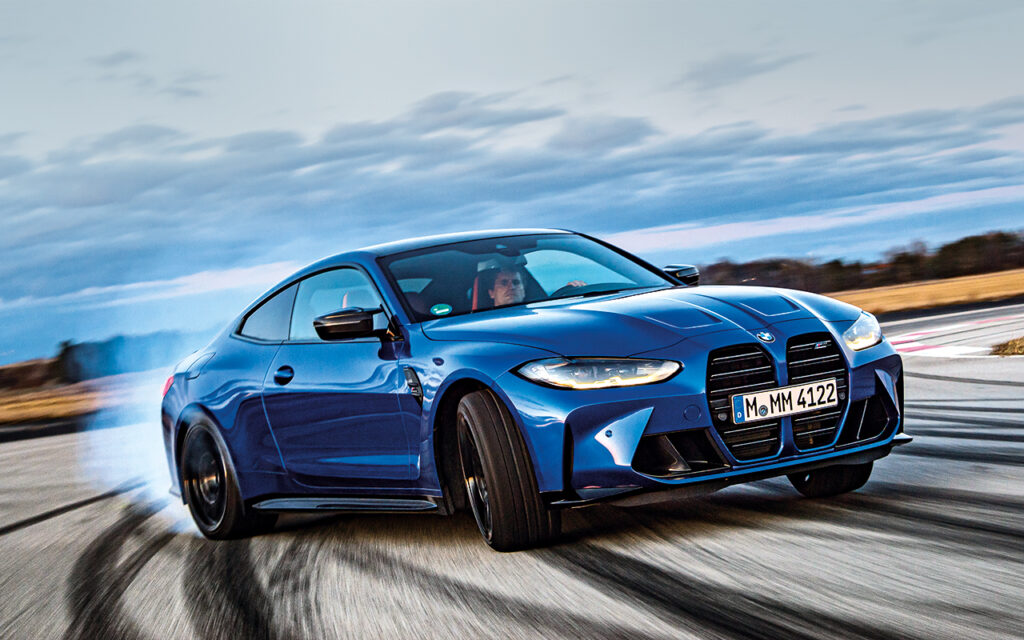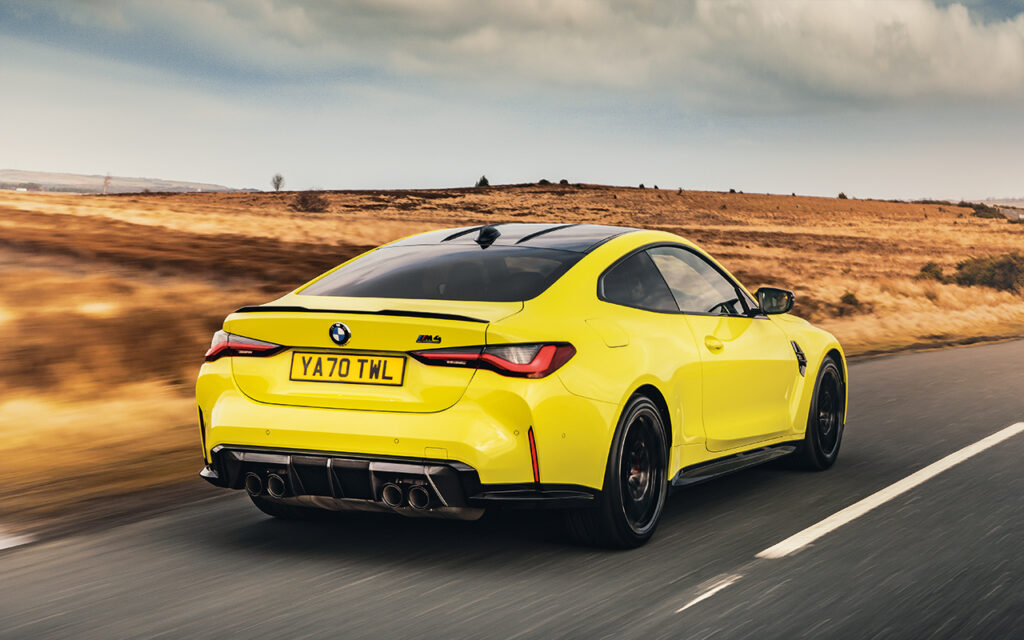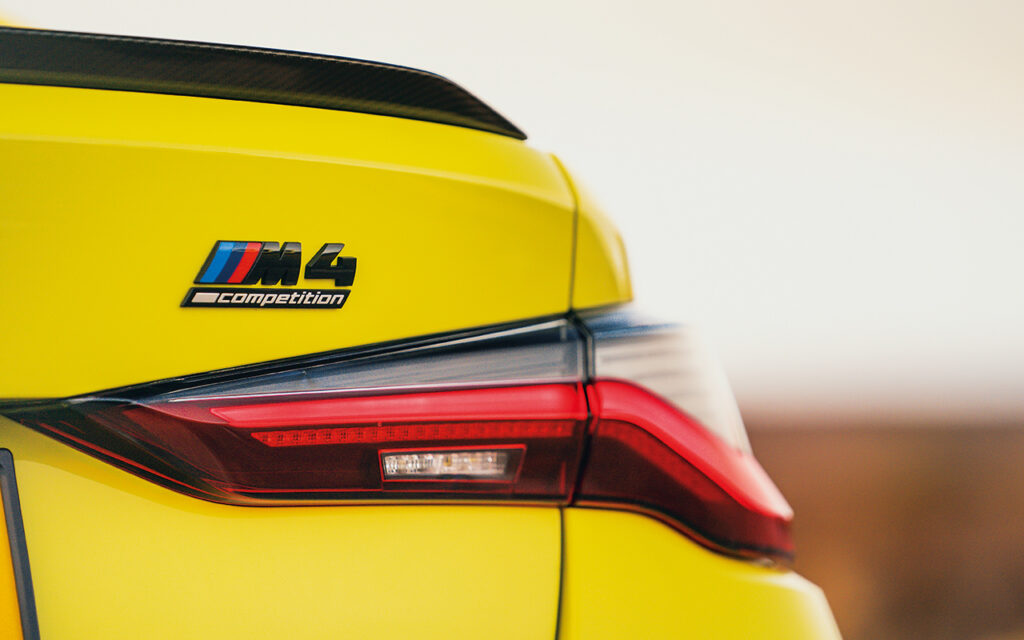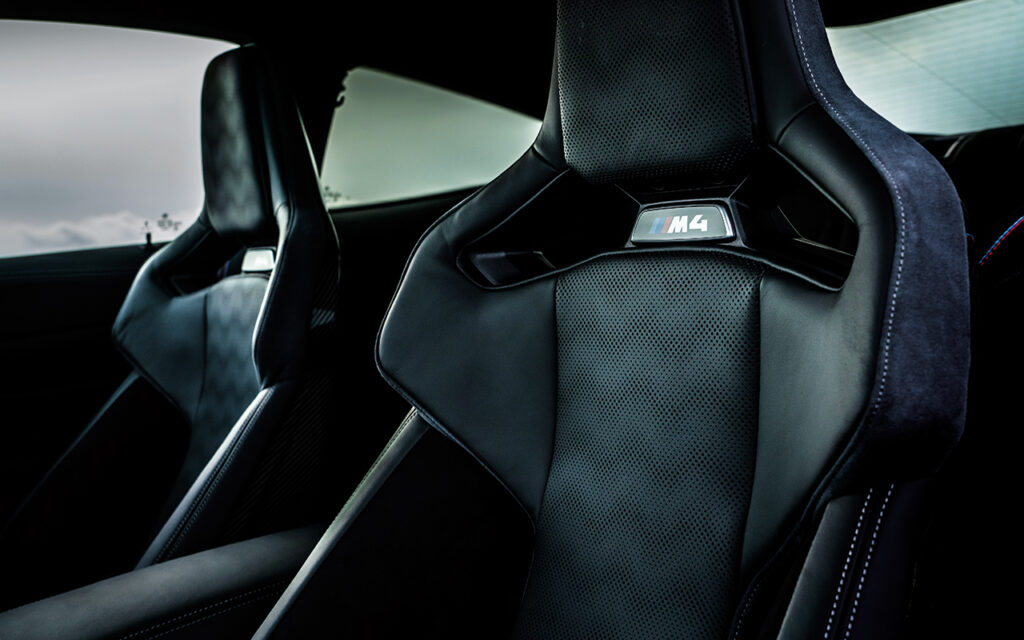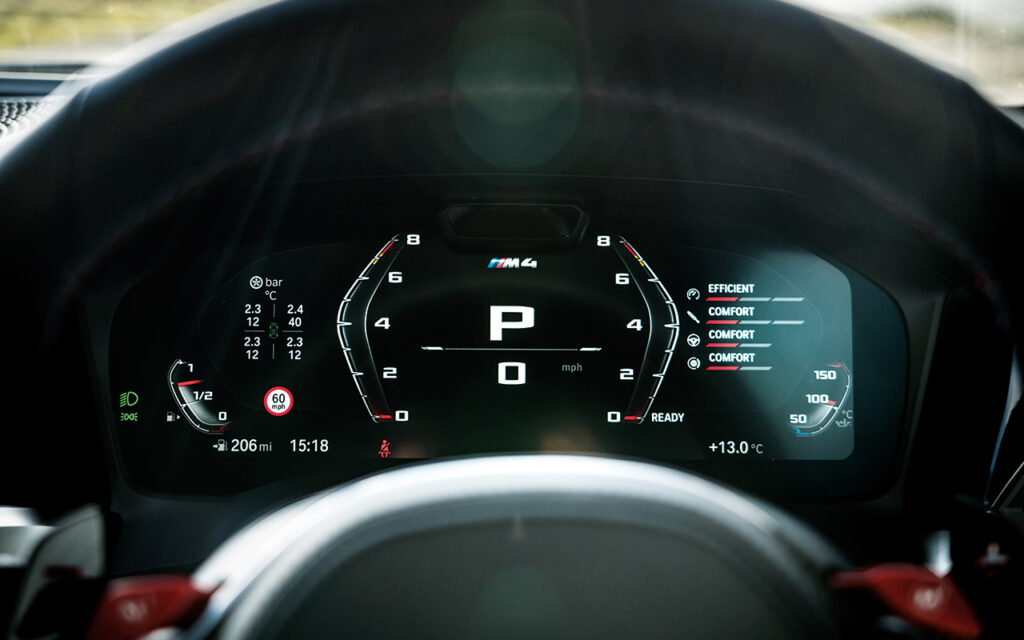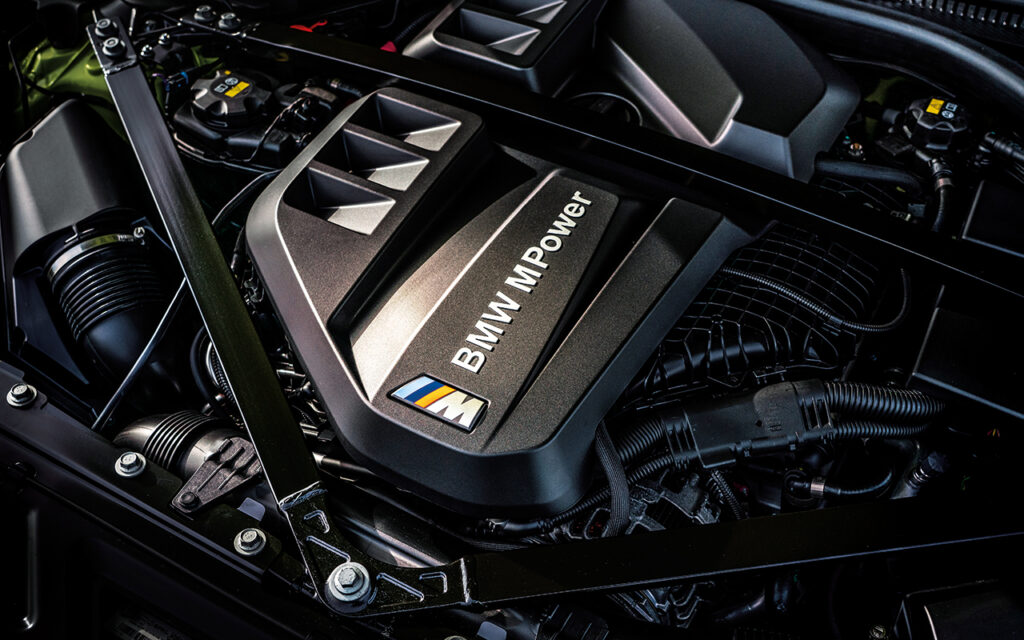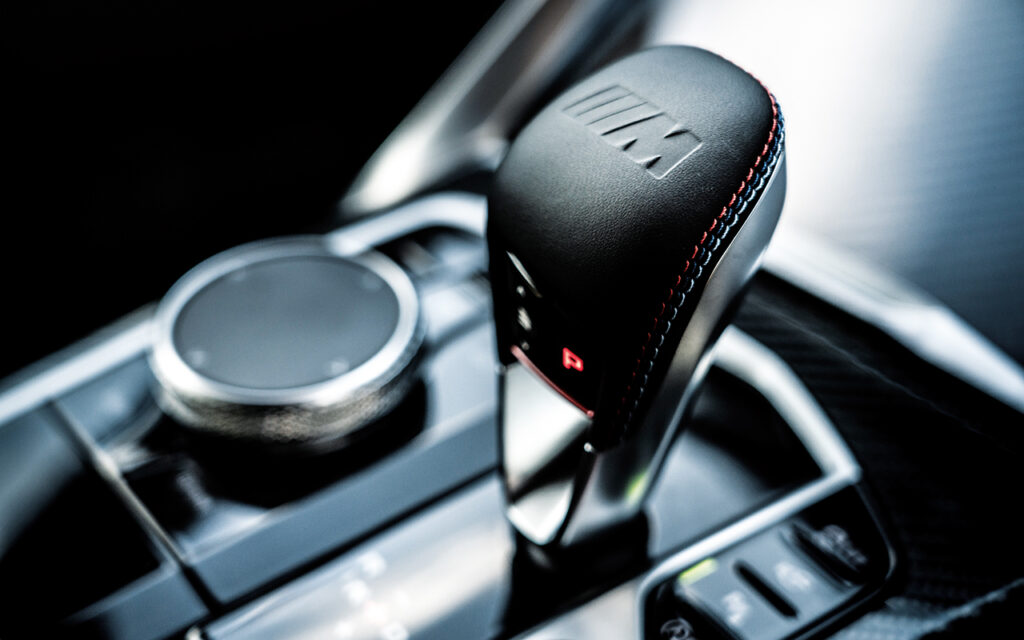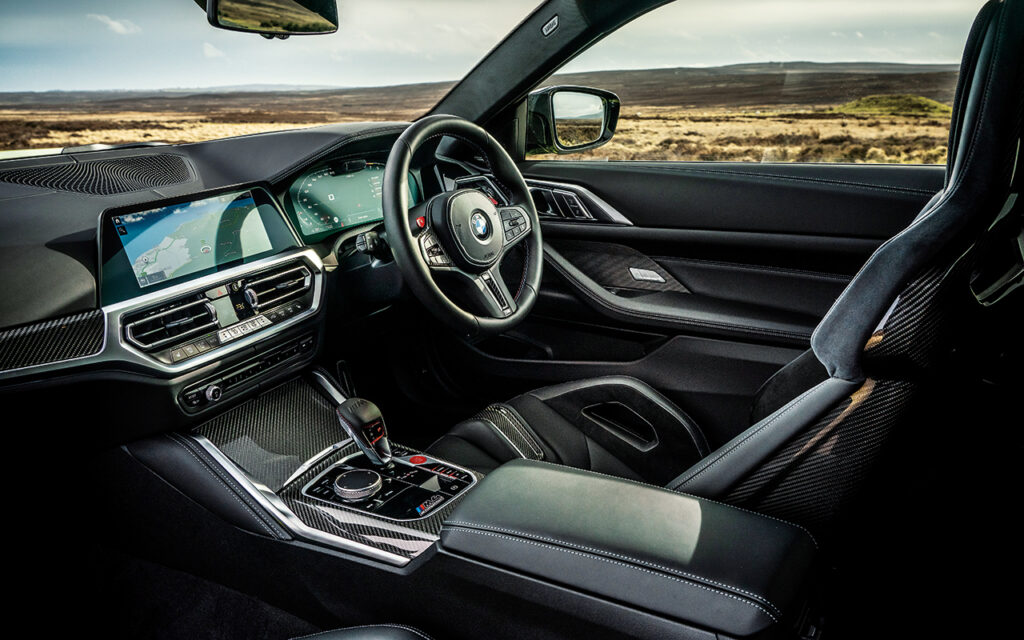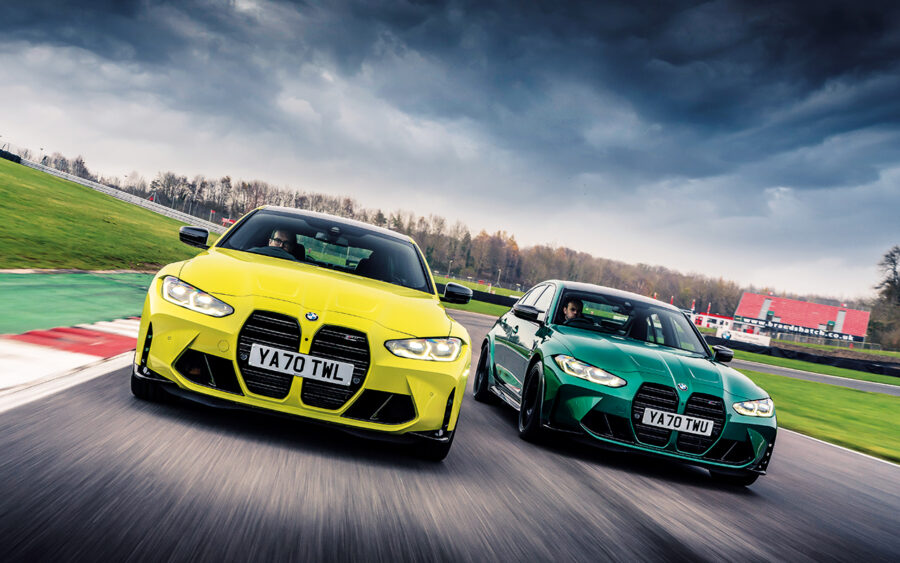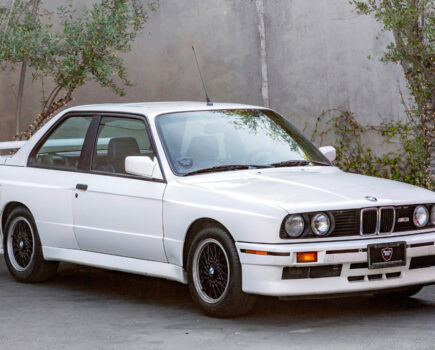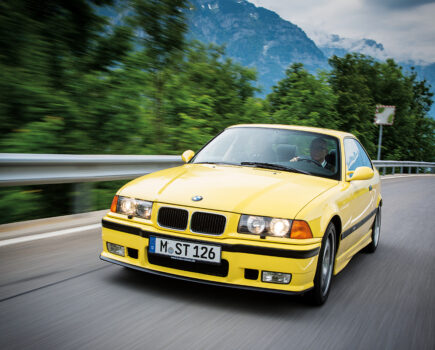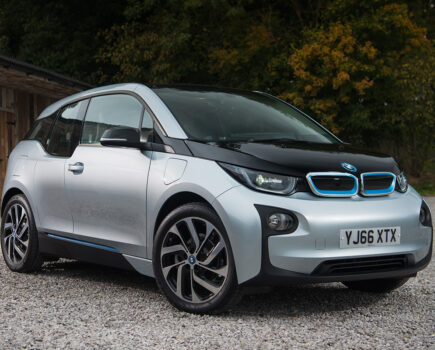It’s the BMW M3 Competition up against its M4 relation. Which one of these 510hp weapons would we pick?
Words: Matt Robinson
This is a battle we couldn’t always have held in the storied history of the BMW M3. Ignoring for a moment the fact that the four- and two-door performance flagships of the 3 and 4 Series families respectively have subtly different alphanumeric badges, in some of the previous generations of M3 there was no such thing as a four-door model. So it’s not a confrontation that has raged continuously throughout the ages.
It was in the E36 M3 offering that a saloon variant arrived, and although the developmental E-codes split for the E9x generation – leaving the four-door V8 M3 as the E90 and the Coupé as the E92 – it wasn’t until the F80/82 pairing that separate M3 and M4 lines became ‘the norm’. So, in the seventh iteration of the 3 Series story, with the sixth M3 and the second M4 facing off, we’re going to try and officiate an in-house duel: which one of these high-performance BMWs should you be choosing over the other?
Before we begin on the technical details, things look ominously weighted against the M4 Competition. For starters, it’s £1,300 more expensive than the M3 Competition, and it’s obviously less practical with fewer doors and a 40-litre smaller boot; it musters up 440-litres of cargo space, the M3 trumping it with 480- litres. It would help if the M4 were stunning to behold, but as we’ve already talked about on these pages before, the current 4 Series is a divisive-looking car.
This runs beyond the blatant talking point of those grilles, because the M3 is similarly afflicted (unlike any other model of G20 3 Series) with the new nose, but beyond the A-pillar the M3 is the more cohesive piece of styling. Its rear flanks are less weighty, it has a tauter design to the rear, the back arches are more muscled and appealing, and proportionally it just works better in our eyes. You might think different, true, but surely no one could successfully argue that the M4 is strikingly attractive enough to convincingly walk a beauty contest between it and the M3 to justify its higher asking price.
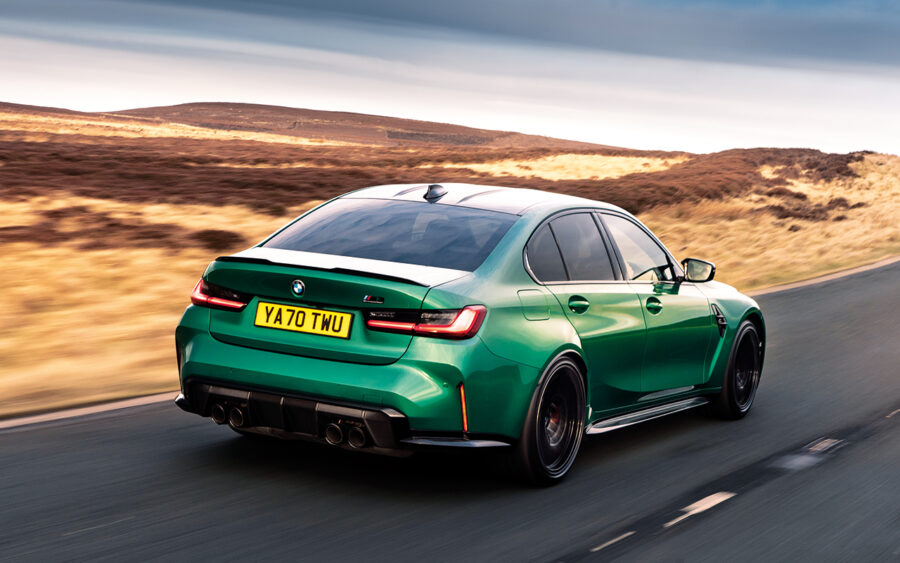
A word, before we leave the exterior, on the colour palette. BMW M has been extraordinarily generous with both the M3 and M4, because there’s a whole array of interesting solid and metallic paints you can choose for either car without adding a penny to their asking price. Alpine White and the signature Sao Paulo Yellow (for E36 fans, we can tell you in the metal that it’s very Dakar-ish) are the two solid choices for no cost, while moving into the metallic paints there’s Portimao Blue, Toronto Red and Isle of Man Green, with a couple of greys and a black also on the cards.
Until you get to either Dravit or Oxide Grey, or BMW Individual Tanzanite Blue II (all of which are £1,100), or you fancy a matte-effect ‘Frozen’ paint job in one of Portimao Blue (£2,985) or Brilliant White (£3,985), you don’t need to splash out to make your high-performance M car look as special as possible.
Moving inside, there’s precious little to separate the two, if you’re sitting in the front. Naturally, adults will prefer to be in the back of the M3 than the M4, simply because getting into the second row of seats is a lot easier with a couple of extra doors at your disposal, but the M4 isn’t totally without merit in this regard – as 2+2s go, it’s one of the more generously proportioned vehicles on the market of any size or price. However, up front, both cars are superb.
Pay £6,750 for the M Carbon Pack and not only do you get some extra gewgaws on the outside as part of the huge payment – such as a lip spoiler on the boot, door mirror caps plus various vents and intakes, to go with the carbon roof that is now standard on both cars – but also the most exquisite M Carbon bucket seats. These things are terrific, even accounting for that odd bit of carbon that’s positioned centre-front of the squab. Insert your own, er, lewd thoughts about what it might be for, right here.
Anyway, stunning carbon paddle shifts, a spot-on driving position, a perfect steering wheel that’s not too thick in the padding department, and various M-specific accoutrements, displays and switchgear help lift the cabin ambience of the 3 and 4 Series to levels befitting cars in the £70,000-plus bracket. The M Head-Up Display and the better-resolved digital instrument cluster with an M Mode single-dial graphical interface are both excellent at conveying information quickly to the driver who’s in a hurry, so in terms of ergonomics, appearance and star quality, the cabins of the M3 and M4 Competition have got all the main disciplines sorted.
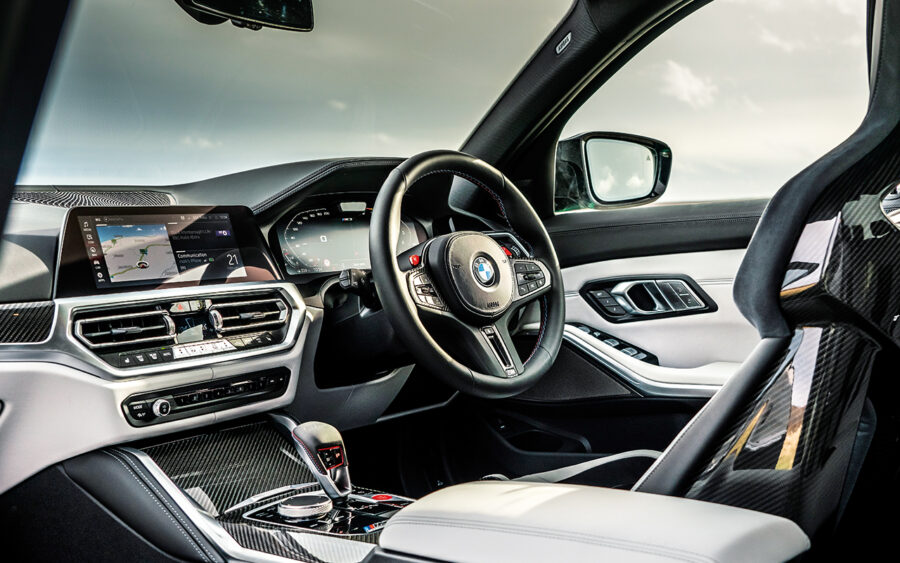
So, now we can move onto the mechanical bits. While there will be non-Competition models of the M3 and M4 sold in left-hand-drive markets, here in the UK we just get the Competitions. This means the 510hp/480lb ft variant of the new ‘S58’ biturbo straight-six 3.0-litre powerplant. They are huge outputs, when you think about it; the previous F80/82 models, which made the transition from normal aspiration to forced induction for the first time in M3/M4 history, only started out with 431hp and 406lb ft, sizeable deficits of 79hp and 74lb ft. Even in its most outrageous application, in the nose of the bonkers M4 GTS, the old S55 twin-turbo six only achieved 500hp and 443lb ft, so these two Competitions are easily the brawniest factory M3/M4 cars yet.
To try and corral such turbocharged thump, the dual-clutch gearbox has been abandoned in favour of the M Steptronic already seen in the F90 M5 and the G15 M8 Competition. Yes, that’s a traditional torque-converter gearbox, which might seem odd in a full M car, but it has worked perfectly fine in the two V8 Ms already mentioned, so it shouldn’t struggle in the six-cylinder M3 and M4 twins.
Elsewhere, there’s an Active M Differential to apportion torque out 100 percent to either rear wheel on the trailing axle, new software that allows ten different settings of traction-control intervention, from fully off ‘0’ to fully on ‘10’, and also the much talked-about M Drift Analyser. We didn’t try that one on the road, let’s put it that way.
BMW has also fitted the Competitions with staggered alloy wheels for the first time, 19s on the front axle and 20s on the rear. These are shod in Michelin Pilot Sport 4 tyres as standard, but you can opt for Cup 2 rubber if you need more trackday grip. An M Pro Pack for £7,995 brings in carbon-ceramic brakes and a speed limiter increase to 180mph, although you can choose between red, blue and black callipers on the standard stoppers to give more eye-catching detail behind the spokes of the wheels. For what it’s worth, carbon-equipped M3 and M4s will have gold callipers.
Allow us to get a few negatives out of the way. Both the M3 and M4 Competition are heavy cars. The saloon clocks in at 1,805kg EU (that’s fluids, 90 percent fuel and a 75kg driver onboard), while the coupé is only five kilos trimmer at bang on 1.8 tonnes. And while the G80/G82 come on Adaptive M Suspension dampers as standard, offering three modes of Comfort, Sport and Sport Plus, the first of these doesn’t exactly do what it says on the tin. The ride quality is always a touch firm-edged, the road noise coming into the cabin a little on the louder side than necessary.
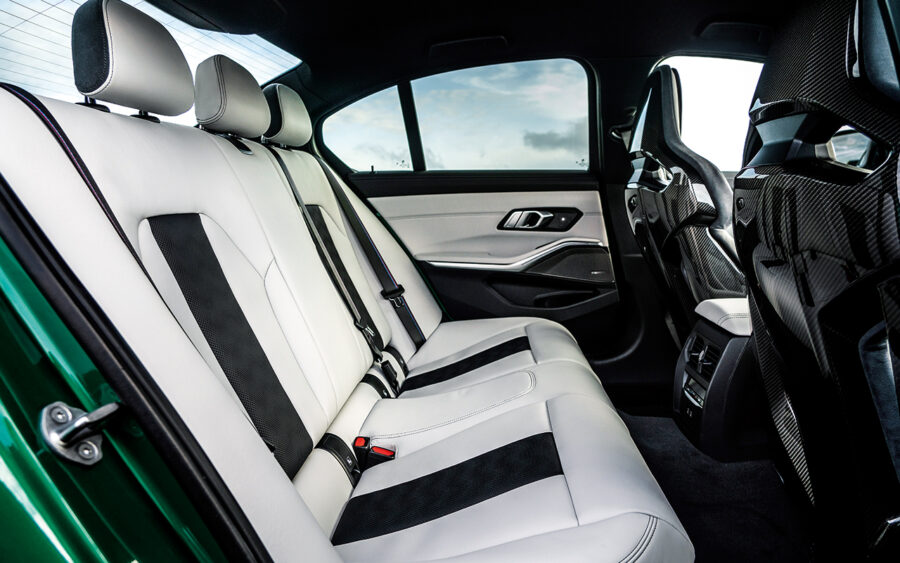
Thankfully, there are two things that mitigate this issue: one, while the M3 and M4 Competition never let you forget just how serious and potent they are, even when they’re just cruising along a motorway or ambling through a town, they are never outright uncomfortable; and two, in Sport mode, the damping is actually quite marvellous at providing a good balance of pliancy-to-body-control, so you can just leave the BMWs in Sport and be done with.
From thereon in, the G80 and G82 will astound you. There are more settings, such as two for the brakes, three for the steering (all of which, we’re thoroughly delighted to report, are magnificent), and another three for the drivetrain, and you can tweak and play around with these at first to gain some genuine reward and tutelage from the BMW, before saving your preferred car settings to the M1 and M2 buttons on the steering wheel.
And then you’ll have either one of the greatest supersaloons of all time, in the stocky form of the M3, or a four-seat coupé pretty much beyond modern-day compare if you go for the M4. Where early S55-equipped F80s and F82s could feel spiky, aggressive and ill-calibrated, the G80 and G82 are none of those things. There’s an immediacy of response to the front end of the Ms that imbues the driver with such immense confidence from mile one that you soon forget that you’re in heavy machinery. Even low-speed manoeuvring and negotiating your way out of urban areas, these Competitions feels agile and lithe, not lumbering and leaden.
Once the road gets interesting, though, they will blow you away with their sheer joyous handling. Oversteer is never more than a modest ankle-flex away, thanks to the linearity and lag-free nature of the S58, but when the traction breaks at the back the resulting slides are controllable and fun, instead of being borderline terrifying. You don’t have to make the M3 and M4 Competition wag their tails, though, because traction is phenomenal considering the torque coursing through the rear tyres alone. On the way are xDrive AWD variants of these two, but we cannot fathom for the life of us why you would ever need them.
Because, with the straight-six snarling away up front (it’s no S54 in the acoustic when revved out to 7,200rpm and the quad exhausts chip in with the requisite rumbles and thuds) and the M Steptronic proving there is no need to lament the loss of either a DCT or a full three-pedal manual gearbox, the M3 and M4 Competition are both epic. They have wheel travel for the ages, pressing as much of their Michelins into the surface as possible. They have balance from the top drawer, with adjustability of cornering line variable by the micron through the steering and pin-sharp throttle. They have pace to burn, and they have turn-in that few comparable rivals can match. Only that pesky VW Beetle derivative from Stuttgart gets close to the M4, while you’d need an Alfa Romeo Giulia Quadrifoglio to get anywhere near the M3’s incisiveness and sheer charm.
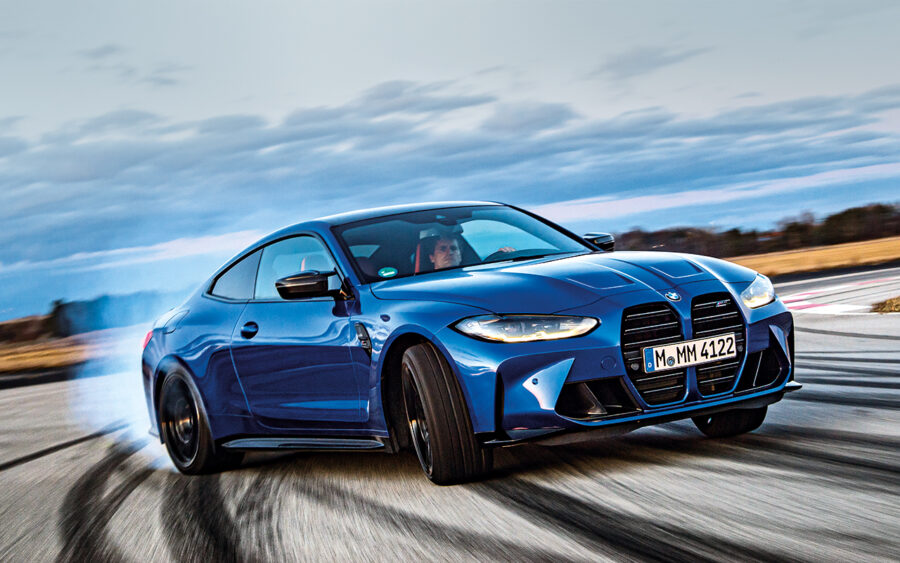
So it’s not just novelty value that allows us to say with great conviction that the current G80 and G82 are already among the greatest M3s (or M4s) that have yet been built. Strip out their grilles, their colossal expense and an occasionally brittle low-speed ride, and beyond that there is much to adore and little to dislike about the pair of them.
But we’ll make the call we promised here: buy the M3. It’s marginally better-looking, it’s more practical, it’s a tad cheaper and it’s no less exhilarating, magical nor downright edifying to drive than the M4 Competition. Already ordered yourself a G82 in Sao Paulo Yellow? Not to worry; when it comes to the new BMW M4, as second prizes go this is utterly beyond compare.
